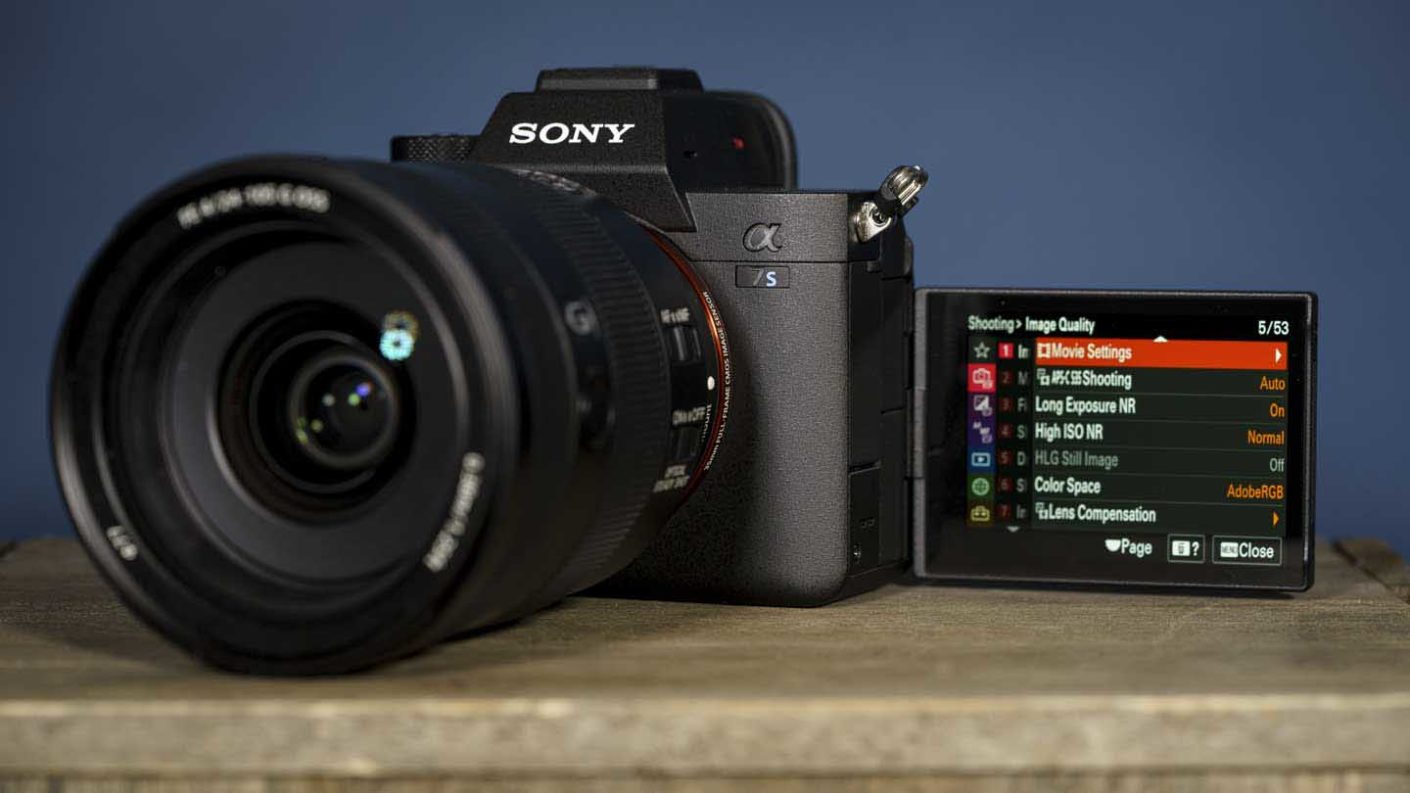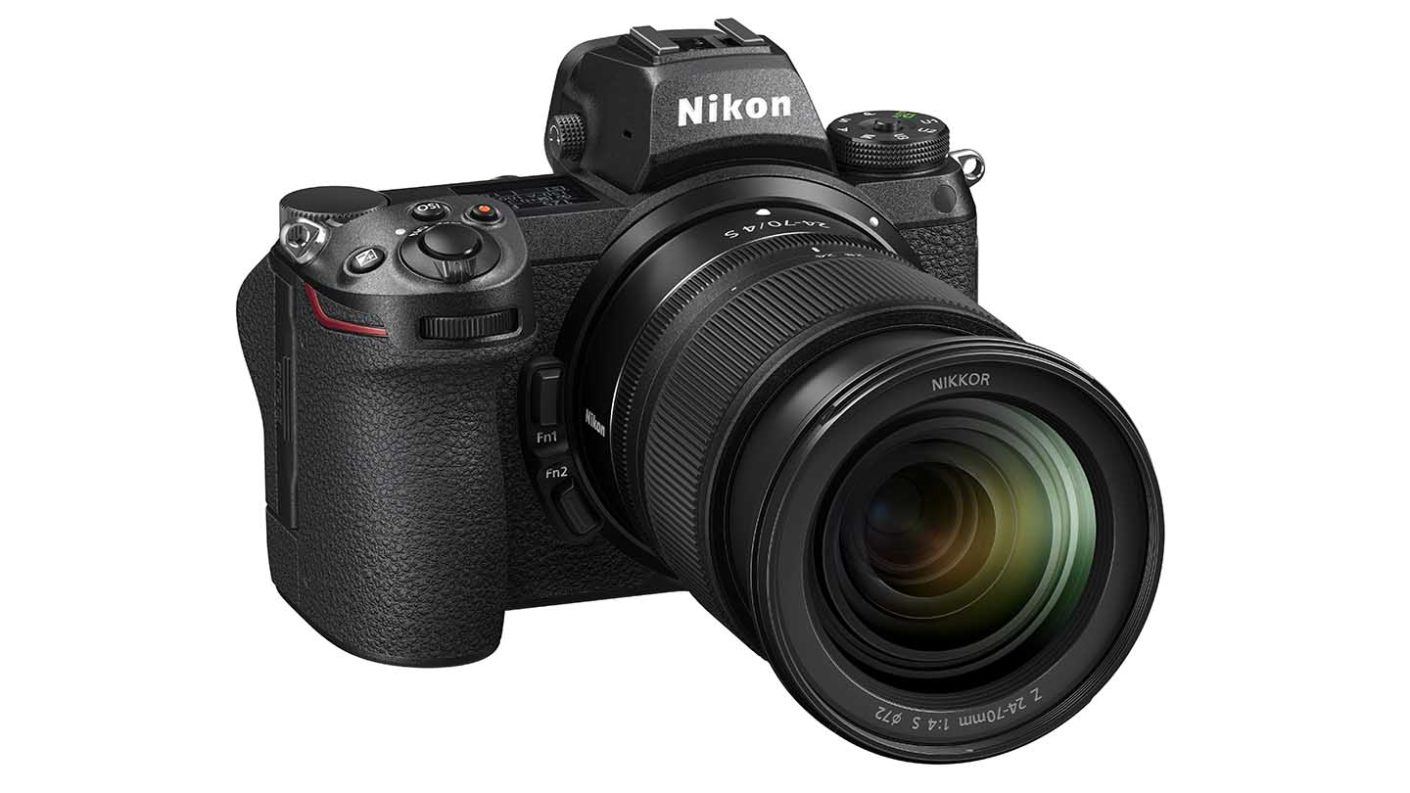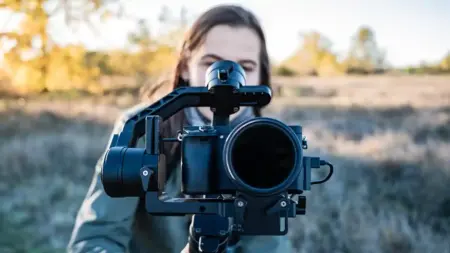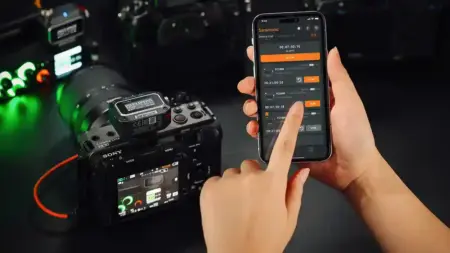Astrophotography, an art and science that seeks to portray the ethereal beauty of the cosmos, presents unique challenges to photographers. Far removed from traditional photography, astrophotography demands us to capture light from celestial objects that are at staggering distances from us and are often very dim. To produce a captivating image of a starry sky, the spiral arms of a distant galaxy, or the mysterious bands of a nebula requires patience, technique, and the right equipment.
The challenges of astrophotography are numerous. To begin with, subjects are usually poorly lit, demanding cameras with the ability to capture light exceptionally well. In addition, the Earth’s rotation means that stars will appear to move across the sky during long exposures, which can result in streaky star trails. These and other considerations mean that the best cameras for astrophotography need to have a unique blend of capabilities.
Is a DSLR good for astrophotography?

DSLR cameras have been the workhorses of professional photography for many years, and they can indeed be great for astrophotography. A DSLR with a full-frame sensor can collect a lot of light, crucial for capturing those distant celestial bodies. Also, DSLRs typically have good noise reduction capabilities and excellent dynamic range, both of which are vital in capturing the subtle play of light and shadow in the night sky.
Can you do astrophotography with any camera?
Technically, you can attempt astrophotography with any camera, but the results may not meet expectations. The small sensors in point-and-shoot cameras or smartphones limit their light-gathering capabilities, which can result in grainy, underexposed images. Even among DSLRs and mirrorless cameras, not all are created equal. As we’ve mentioned, the ideal camera for astrophotography should have a large sensor, high ISO capabilities, excellent noise reduction, and a strong dynamic range.
Astrophotography presents unique challenges to photographers, far removed from traditional genres. Capturing celestial objects—often dim and millions of light-years away—requires patience, technique, and the right equipment. From starry skies to nebulae, creating awe-inspiring astrophotography images demands cameras that excel at light gathering, high ISO performance, and noise reduction.
The challenges include low light levels and the Earth’s rotation, which causes stars to trail during long exposures. This makes choosing the right camera and accessories essential for success.
Is a DSLR Good for Astrophotography?
Yes, DSLRs are a great choice for beginners and even advanced astrophotographers. Full-frame DSLRs are particularly effective as they collect more light, crucial for capturing celestial objects. They also offer excellent noise reduction and dynamic range, key for revealing details in dark skies. DSLRs are versatile and accessible, making them a popular starting point for astrophotography.
Can You Do Astrophotography With Any Camera?
While technically possible, results depend on the camera’s capabilities. Small sensors in point-and-shoot cameras or smartphones limit light-gathering ability, often producing grainy images. However, newer flagship smartphones with dedicated astrophotography modes are improving accessibility. To achieve the best results, cameras with large sensors, high ISO performance, and excellent noise reduction are essential.
For the best experience, also invest in a fast wide-angle lens, a sturdy tripod, and consider tools like star trackers for longer exposures. Post-processing software is equally critical for refining your astrophotography images.
In the following sections, we will explore six cameras that check all these boxes and are well-suited to meet the demands of astrophotography.
Nikon D850
Specification
- Camera type: Full-frame (FX) DSLR
- Announced: 24th August 2017
- Lens mount: Nikon F
- Sensor: 45.7Mp full-frame (35.9 x 23.9mm) backside-illuminated CMOS
- Maximum continuous shooting rate: 7fps as standard, 9fps with the optional MB-D18 Multi-Power Battery Pack for up to 51 14-bit lossless compressed raw files or 170 12-bit lossless compressed raw files
- Autofocus system: Viewfinder: Multi-CAM 20K autofocus sensor 153 focus points (including 99 cross-type sensors and 15 sensors that support f/8), of which 55 (35 cross-type sensors and 9 f/8 sensors) are available for selection, Live view: Contrast detection
- Viewfinder: Optical pentaprism type
- Screen: Tilting, touch-sensitive 3.2-inch TFT LCD with 2,359,000 dots
- Dimensions: 146×124×78.5mm / 5.8×4.9×3.1inches
- Weight: 1,005g / 2lb 3.5oz with battery and XQD memory card but without body cap, 915g /2lb 0.3oz camera body only
Nikon D850 is a full-frame DSLR that is beloved by many professional photographers. It boasts a 45.7-megapixel BSI CMOS sensor, delivering stunning detail and excellent low-light performance. Its ISO range of 64-25,600 can be extended up to 102,400, which makes it well-equipped to handle the challenges of astrophotography. The dynamic range of the D850 is also outstanding, allowing for a nuanced capture of the night sky’s varying light.
£3500
$3296.95Sony A7S III

Specification
- Camera type: Full-frame mirrorless
- Announced: 28th July 2020
- Sensor: Full-frame 12.1Mp BSI CMOS
- Processing engine: Bionz XR
- Sensitivity: Video: ISO 80-102,400 expandable ISO 40-409,600. ISO base in S-Log is ISO 640 but it can be expanded down to ISO 160. Stills: ISO 80-102,400 expandable 40-409,600
- Autofocus system: Hybrid with 759 phase detection points and 425 contrast detection points, Real Time Eye AF (Human and Animal for stills, Human for video)
- Stabilisation: 5-axis IBIS and digital, up to 5.5EV shutter speed compensation
- Video resolution: 4K at up 120fps and 1080p at 240fps, 10-bit and 4:2:2 colour, 16-bit raw video over HDMI
- Video file formats: XAVC S,XAVC HS
- Video compression: XAVC S: MPEG-4 AVC/H.264, XAVC HS: MPEG-H HEVC/H.265
- 4K Video details: XAVC HS 4K 3840 x 2160 (4:2:0, 10bit, NTSC): 120p (200Mbps), 60p (150Mbps / 75Mbps / 45Mbps), 24p (100Mbps / 50Mbps / 30Mbps); 3840 x 2160 (4:2:0, 10bit, PAL): 100p (200Mbps), 50p (150Mbps / 75Mbps / 45Mbps); 3840 x 2160 (4:2:2, 10bit, NTSC): 120p (280Mbps), 60p (200Mbps / 100Mbps), 24p (100Mbps / 50Mbps); 3840 x 2160 (4:2:2, 10bit, PAL): 100p (280Mbps), 50p (200Mbps / 100Mbps) XAVC S 4K 3840 x 2160 (4:2:0, 8bit, NTSC): 120p (200Mbps), 60p (150Mbps), 30p (100Mbps / 60Mbps), 24p (100Mbps / 60Mbps); 3840 x 2160 (4:2:0, 8bit, PAL): 100p (200Mbps), 50p (150Mbps), 25p (100Mbps / 60Mbps); 3840 x 2160 (4:2:2, 10bit, NTSC): 120p (280Mbps), 60p (200Mbps), 30p (140Mbps), 24p (100Mbps); 3840 x 2160 (4:2:2, 10bit, PAL): 100p (280Mbps), 50p (200Mbps), 25p (140Mbps) XAVC S-I 4K 3840 x 2160 (4:2:2, 10bit, NTSC) (Approx.): 60p (600Mbps), 30p (300Mbps), 24p (240Mbps); 3840 x 2160 (4:2:2, 10bit, PAL): 50p (500Mbps), 25p (250Mbps)
- Gamut: S-Log2 and S-Log3, S-Gamut3.Cine and S-Gamut3
- Slow and Quick (S&Q) mode options: NTSC: 1fps,2fps,4fps,8fps,15fps,30fps,60fps,120fps, 240fps4, PAL: 1fps,2fps,3fps,6fps,12fps,25fps,50fps,100fps, 200fps
- Still File formats: Raw, JPG, HEIF
- Screen: 3-inch 1,440,000-dot vari-angle touchscreen
- Viewfinder: 0.64-inch type 9,437,184-dot OLED electronic viewfinder, with refresh rate up to 120fps, adjustable magnification up to 0.9x
- Maximum continuous shooting rate: 10fps with mechanical or electronic shutter for up to 1000 uncompressed raw files when a CFexpress Type 1 card is used
- Storage: Dual: SD/SDHC/SDXC (UHS-II) and CFexpress Type A
- Dimensions (W x H x D): 128.9 x 96.9 x 80.8mm / 5 1/8 x 3 7/8 x 3 1/4 inches
- Weight: 699g / 1 lb 8.7 oz
If you’re after a full-frame mirrorless camera that excels in low-light conditions, look no further than the Sony A7S III. Yes, this is Sony’s A7-series camera aimed at videograph, but this model has a relatively low resolution of 12.1 megapixels, but it’s a deliberate design choice that enables larger pixels on the sensor, increasing its light-gathering ability. Combined with its impressive ISO range of up to 409,600 and stellar noise reduction, it’s an absolute low-light beast, making it an excellent choice for astrophotography.
£3800
€4200 / $3499For
- Large pixels for great low-light performance
- 4K full-pixel readout without binning and 10-bit depth 4:2:2 colour available in all recording formats
- Vari-angle touchscreen and class-leading electronic viewfinder
Canon EOS R6 Mark II
Specification
- Camera Type: Mirrorless
- Announced: 2nd November 2022
- Sensor: 24.2MP Full-frame Dual Pixel CMOS AF II
- Processor: Digic X
- Lens mount: RF
- Sensitivity range: Stills: ISO 100-102,400 expandable to ISO 50-204,801, Video: ISO 100-25,600 expandable to ISO 204,801
- File formats: Raw + Jpeg/HEIF, MP4 H.264/H.265
- Continuous shooting rate: Mechanical shutter: 12fps for 1000+ Jpeg or 110 raw or 1000 CRAW images, Electronic shutter: 40fps for 190 Jpeg or 75 raw or 140 CRAW images, or 20fps, 5fps all with AF tracking
- Maximum video resolution: 4K (3840 x 2160) up to 60fps, Full HD (1920 x 1090) at up to 120fps
- Autofocus system: Dual Pixel CMOS AF II phase detection with 100% coverage
- Viewfinder: 0.5-inch 3.69million-dot OLED electronic viewfinder with 120fps refresh rate
- Screen: 3-inch 1.62-million dot vari-angle touchscreen
- Autofocus: Dual Pixel CMOS AF II with Advanced Animal AF (recognising dogs, cats and birds) supported in all video modes with 100% coverage and up to 1053 'AF segments'
- Stabilisation: In-body image stabilisation (IBIS) that works with lens IS and enables up to 8-stops of shutter speed compensation
- Storage: Dual slots, 2x SDXC UHS-II
- Dimensions: 138.4 x 98.4 x 88.4mm
- Weight: 588g / 670 g with card and battery
The Canon EOS R6 Mark II is a mirrorless full-frame camera that has a reputation for its low-light prowess. Its 24.2-megapixel sensor might seem modest, but it works excellently in capturing light without creating too much noise. The R6 Mark II also features Canon’s latest image processing engine, DIGIC X, which significantly improves noise handling. Its native ISO range extends up to 102,400, which is expandable to 204,801, making it a powerful tool for astrophotographers.
£2800
€3149.99For
- Popular pixel count
- Fantastic subject detection AF
- 4K video oversampled from 6K
Nikon Z7 II

Specification
- Camera type: Full-frame mirrorless camera
- Announced: 14th October 2020
- Lens mount: Nikon Z
- Sensor: Full-frame (FX 35.9 x 23.9mm) 45.7MP backside illuminated (BSI) sensor
- Processing engine: Dual Expeed 6
- Stabilisation: 5-axis in-body VR
- Sensitivity: ISO 64-25,600, expandable to ISO 32-102,400
- Maximum continuous shooting rate: 10fps for up to 200Jpegs or 77 12-bit uncompressed raw files, 9fps with 14-bit raw files
- Autofocus system: Hybrid with phase and contrast detection
- Phase detection points: 493
- Video resolution: 4K (3840 x 2160) 60/50/30/25/24p, Full-HD (1920 x 1080) 120/100/60/50/30/25/24p, Slow-motion mode 1920 x 1080 30p x4/25p x4/24p
- Viewfinder: 0.5-inch 3.69-million-dot electronic viewfinder
- Screen: 3.2-inch 2,100,000-dot tilting touch-screen
- Storage: Dual slot 1 XQD/CFexpress and 1 SD/SDHC/SDXC
- Dimensions (W x H x D): 134 x 100.5 x 69.5mm / 5.3 x 4 x 2.8-inches
- Weight: 705g with battery and memory card but without body cap, 615g body only
The Nikon Z7 II is a full-frame mirrorless camera that offers a whopping 45.7 megapixels, just like the D850 but in a more compact form. It features an impressive dynamic range and a native ISO range of up to 25,600, expandable to 102,400, which ensures it performs excellently even under a starry night sky. The Nikon Z7 II also supports the wide range of NIKKOR Z lenses, many of which are highly suitable for astrophotography.
£2999
€3442 / $2996.95For
- High-quality sensor
- Excellent user interface and control layout
- Weatherproof build
Sony A7R V
Specification
- Camera type: Full-frame mirrorless
- Announced: 26th October 2022
- Sensor: 61MP full-frame sensor
- Processing engine: Bionz XR
- Lens mount: Sony FE
- Continuous Shooting: Up to 10fps burst shooting with full AF / AE Tracking: Hi+: 10 fps, Hi: 8 fps, Mid: 6 fps, Lo: 3 fps
- Autofocus system: Hybrid with 693 phase detection points and subject detection
- Subject detection: Human (Right/Left Eye Select), Animal (Right/Left Eye Select), Bird, Insect, Car, Train, Airplane
- Buffer depth: JPEG Extra fine L: over 1000 frames, JPEG Fine L: over 1000 frames, JPEG Standard L: over 1000 frames, raw : 583 frames, RAW & JPEG: 184 frames, raw (Lossless Compressed): 547 frames, raw (Lossless Compressed) & JPEG: 159 frames, raw (Uncompressed): 135 frames, raw (Uncompressed) & JPEG: 88 frames
- Video resolution: 8K at 24p (1.2x crop), 4K at up to 60p (1.2x crop) or 4K downsampled from 6.2K
- Video formats and compression: XAVC S, XAVC HS, XAVC S: MPEG-4 AVC/H.264,XAVC HS: MPEG-H HEVC/H.265
- Sensitivity range: Still images: ISO 100-32000, expandable to ISO 50-102,40, Movies: ISO 100-32000
- Viewfinder: 1.6cm / 0.64-inch 9,437,184-dot OLED
- Screen: 3.2-inch 2,095,104-dot 4-axis touchscreen
- Storage: 2x CFexpress Type-A / SDXC
- Battery: Rechargeable NP-FZ100 battery supplied
- Battery life: Viewfinder: 440 shots, Screen: 530 shots
- Dimensions: 131.3 x 96.9 x 82.4mm / 5 1/4 x 3 7/8 x 3 1/4 inches
- Weight: 723g / 1lb 9.6oz
The Sony A7R V is another remarkable full-frame mirrorless option, and with its 61-megapixel sensor, it offers the highest resolution on our list. This camera offers exceptional detail and clarity, with a wide dynamic range and excellent noise reduction. Its ISO range of up to 32,000, expandable to 102,400, ensures that it is more than capable in low-light conditions, and the inclusion of Sony’s Real-Time Tracking and Real-Time Eye AF functions can also be very useful for astrophotography.
£3999
$3900 / € 4500For
- High resolution
- Wide range of subject detection modes
- High resolution viewfinder and 4-axis screen





Leave a Reply